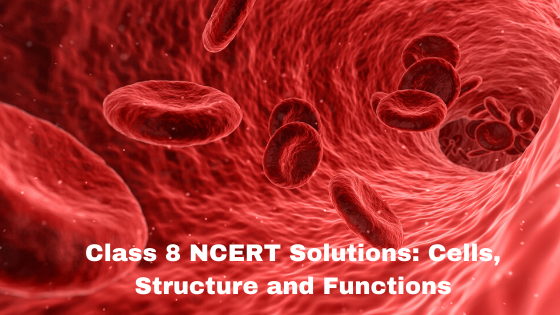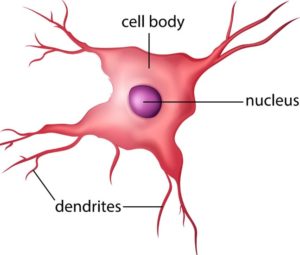
Class 8 Science NCERT Solutions for Chapter 8
Cell Structure and function is a chapter in Class 8 science book. This is one of the most interesting chapters of biology. Cells are the basic structural and functional unit of life. A group of cells combines to form tissues which further form organs, then organ system and organism. In this chapter you will study Animal and plant cells. The difference between animal and plant cell etc. Below you can check NCERT Solutions for class 8 science book, Chapter 8.
Also Read: Class 8 NCERT Solutions Metals and Non Metals
NCERT Solutions for Class 8 Science
Question 1: Indicate whether the following statements are True (T) or False (F).
(a) Unicellular organisms have one celled body (T /F)
Ans (a) True
(b) Muscle cells are branched. ( T / F)
Ans (b) False
(c) The basic living unit of an organism is an organ (T/ F)
Ans (c) False
(d) Amoeba has an irregular shape ( T / F)
Ans (d) True
Question 2: Make a sketch of the human nerve cell. What do nerve cells perform?
Ans 2: Nerve cells transfer electrical impulses and helps the effectors to respond to the stimuli. They carry information from one cell to the other.

Question 3: Write short notes on the following:-
(a) Cytoplasm
Cytoplasm is a jelly substance which is present between the nucleus and the cell membrane. All the cell organelles are present in the cytoplasm only. It is made up of protein, salts, and water. Some of the cell organelles present in the cytoplasm are Mitochondria (the powerhouse of the cell), Golgi bodies and lysosomes.
(b) Nucleus of the cell
It is main component of the cell which is present in the central region of the cell. It contains the genetic material which is responsible for the transfer of characteristics from parents to offsprings. It is separated from the cell membrane by a membrane known as nuclear membrane.
Question 4. Which part of the cell contains organelles?
The cytoplasm of the cell contains organelles. It is a jelly-like substance.
Question 5: Make sketches of Animal and Plant cell and write three points of differences in each.
Ans 5: Both diagrams are present in your textbook.
Plant Cell:
- Cell Wall is present
- Plant cells are rectangular in shape
- Plants cells have chloroplasts to make their own food.
Animal Cell:
- Animal cells do not have cell walls
- Animal cells are round in shape.
- Animal cells do not have chloroplasts.
Question 6: State the difference between eukaryotes and prokaryotes
Ans 6: Eukaryotes
1. Nucleus is present in eukaryotes
2. Eukaryotes are generally multicellular
3. More than one chromosomes are present in eukaryotes
Prokaryotes
- Nucleus is absent in prokaryotes
- Prokaryotic cells are unicellular
- One chromosome is present in prokaryotes but that is not a true chromosome.
Question7: Where are chromosomes found in the cell? State their function
Ans 7: Chromosomes are present in the nucleus of the cell. In humans there are 23 pair of chromosomes. The function of chromosomes is to carry characteristic from parents to offsprings. You must have noticed that many of your characteristics matches with your mother or father.
Question 8: ‘Cells are the basic structural units of living organism’ Explain
Ans: Cells are the basic building blocks of life. The smallest unit is cell which then further forms tissues >> organ >> organ system >> organism. They form the structure of life. The hierarchy explains that they are the basic structural unit of living organisms.
Question 9: Why are chloroplasts found only in plant cells?
Ans 9: Chloroplasts are found only in the plant cells because plants are autotroph. They need to make their own food. They contain a green colour pigment that helps in the process of photosynthesis.
So, these were the NCERT solutions for class 8 Science chapter 8. We will share NCERT Solutions of other chapters of Class 8 Science book. Stay connected with us for more updates.

Leave a Reply